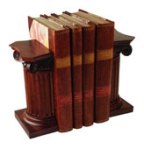 March 2 is an illustrious day in the annals of American literary culture. Theodor Seuss Geisel, infinitely better known as Dr. Seuss, author and illustrator of such beloved children’s classics as Horton Hears a Who!, How the Grinch Stole Christmas!, and The Cat in the Hat, was born on March 2, 1904. I can claim a single degree of separation; my mother once cooked dinner for him in the 1970s. Seuss’s oeuvre appears very different in the cold light of adulthood: many of his most famous works emerged within a Cold War framework of anxiety over a perceived “crisis” in American education. The Cat in the Hat is, as Louis Menand discusses in a fascinating article from the New Yorker, “Cat People” a response to 1955’s infamous Why Johnny Can’t Read, which advocated both a more active, “masculine” literature for children and a phonics approach to reading.
March 2 is an illustrious day in the annals of American literary culture. Theodor Seuss Geisel, infinitely better known as Dr. Seuss, author and illustrator of such beloved children’s classics as Horton Hears a Who!, How the Grinch Stole Christmas!, and The Cat in the Hat, was born on March 2, 1904. I can claim a single degree of separation; my mother once cooked dinner for him in the 1970s. Seuss’s oeuvre appears very different in the cold light of adulthood: many of his most famous works emerged within a Cold War framework of anxiety over a perceived “crisis” in American education. The Cat in the Hat is, as Louis Menand discusses in a fascinating article from the New Yorker, “Cat People” a response to 1955’s infamous Why Johnny Can’t Read, which advocated both a more active, “masculine” literature for children and a phonics approach to reading.
March 2 is also the birthday of Tom Wolfe (b. 1930 or 1931), who, in typical self-effacing style, describes himself on his eponymous website as “our prime fictional chronicler of America at its most outrageous and alive.” Wolfe is a founding member of the school of “New Journalism,” a movement that brought literary experimentation and aesthetics into uneasy alliance with journalism’s creed of factual accuracy and impartiality. Wolfe would no doubt claim that his work, including The Electric Kool-Aid Acid Test (1968), The Right Stuff (1979), The Bonfire of the Vanities (1987), and I am Charlotte Simmons (2004), captures something of the American zeitgeist across a broad historical range; critics (and there are many) would demur, suggesting that instead of chronicling or critiquing American culture, Wolfe has instead adopted the stance of a sardonic but unapologetic cheerleader for its worst excesses. Wolfe’s ongoing conflict with other American literary lions (one of whom shares his birthday, below) sets his commitment to “full-blooded realism” against the presumably ex-sanguinated aesthetics of the literary elite: John Updike, Norman Mailer, John Irving. It also sells books, reanimates the “popular” vs. “literary” division, and provides endless fodder for the chattering classes. See a recap here. [In the interests of full disclosure: I have a degree of separation here, too–while at Berkeley, I lived in the house made infamous in The Electric Kool-Aid Acid Test as Owsley’s LSD manufacturing locale. Direct evidence of his presence was long gone.]
I’ve not as yet discovered any personal “degrees of separation” I share with John Irving, but March 2 is his birthday, too (1942, for those of you doing the math). His most famous works, The World According to Garp (1978), The Hotel New Hampshire (1981), The Cider House Rules (1985), and A Prayer for Owen Meany (1989), offer quirky and somewhat self-conscious portraits of New Englanders, and (generally) disrupt the sentimentalist clichés of Americana through moments of absurdist irony. As one of of Tom Wolfe’s Literary Nemeses, Irving’s most noteworthy contribution to the feud has been to state that Wolfe’s work makes him “gag.” This clear grasp of the proximity between the sublime and the ridiculous is characteristic of his work at its best, and otherwise.

